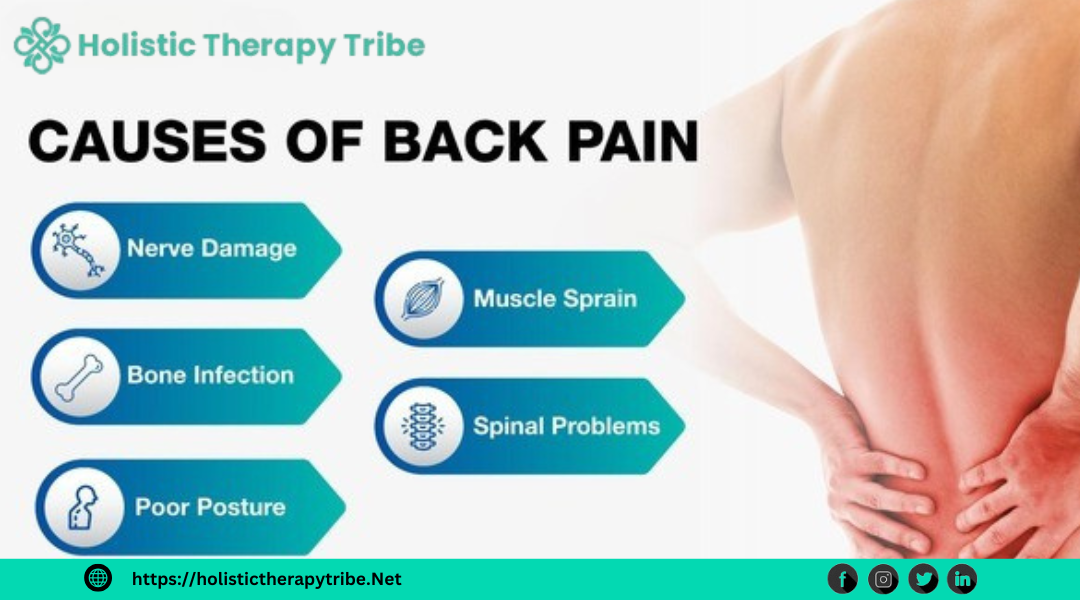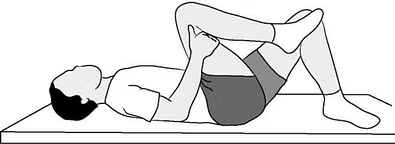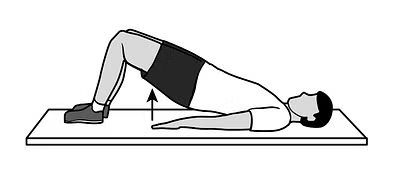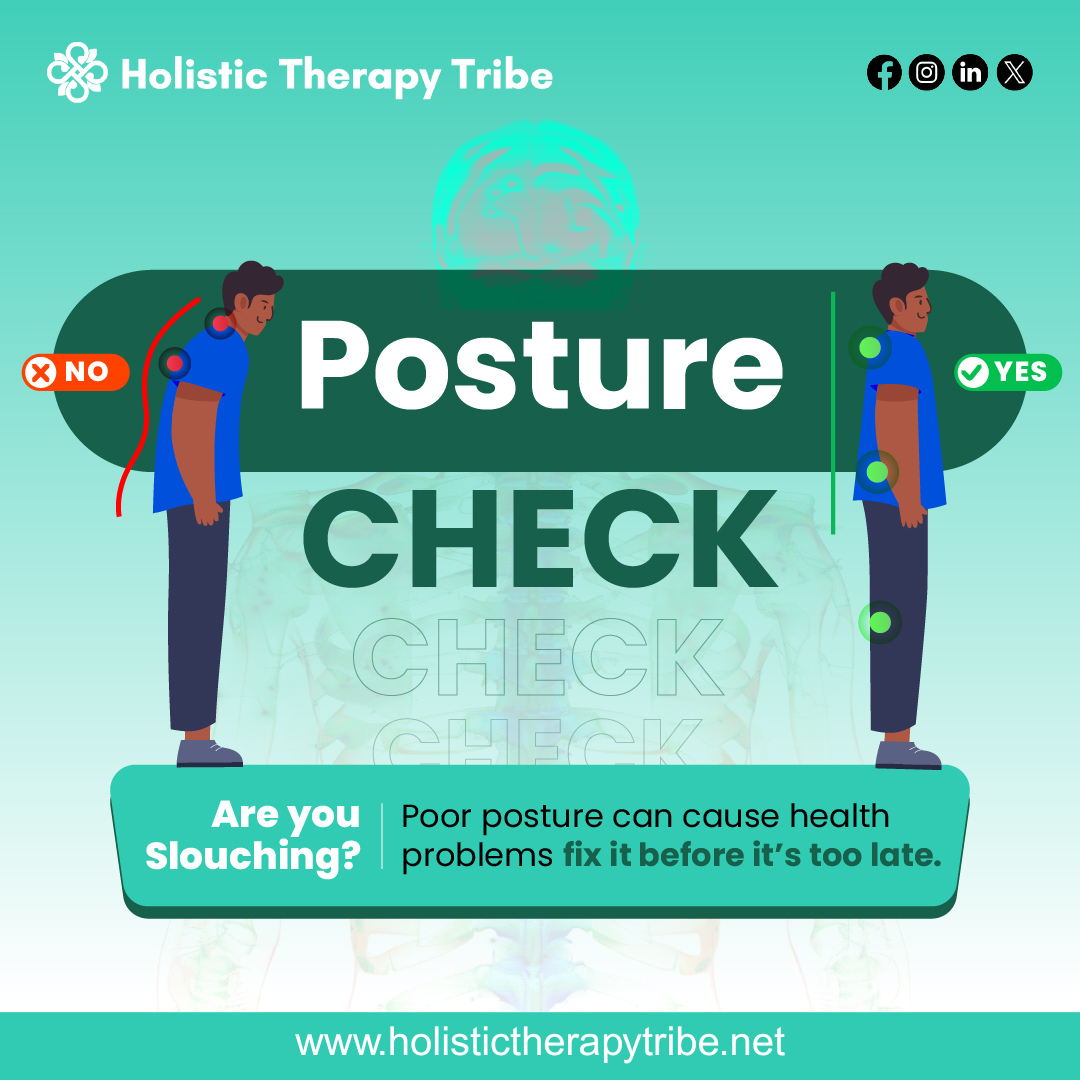Poor posture is the main contributor of the back pain, which is affecting several groups of ages and lifestyles.
Incorrect posture includes misalignments or imbalance in spinal alignment due to continuous slouching, sitting for a longer period of time, or incorrect weight lifting. This can lead to strain in muscle, ligaments, and spinal discs which can increase discomfort and pain.
Causes :-
- Forward head posture
- Longer sitting
- Incorrect weight lifting
- Weak back muscles
Preventions :-
- Frequent movements
- Stretching
- Ergonomic furniture
- Mindful practice

How does poor posture lead to Back Pain?
Abnormal stress on the spine and surrounding muscles are the reason for poor posture which can lead to discomfort and internal injury. Situation which leads to muscle strain and joint compression:
- Slouching
- Forward head posture
- Rounded shape of shoulder
- Spinal misalignmet
For a case, slouching posture can increase pressure on the spine while forward head posture can cause straining in neck upper back muscles. Maintaining the correct posture of the body while sitting or standing can avoid poor posture and prevent back pain.
Can fixing posture eliminate Back Pain?
Correcting poor posture significantly eliminate back pain, here are some points for how correcting posture can help:
- Poor posture causes strain in muscles and ligaments, specifically in the back and neck. Slouching and improper sitting increase pressure on the muscle. By fixing posture, we can distribute equal load across the muscles, and reduce strain which can alleviate back pain.
- Misalignment is associated with poor posture which affects the neck and lower back. By correcting posture we can restore proper spinal alignment, which can reduce pressure on the discs and nerves in the spine.
- Incorporating correct posture, can promote mobility of the body through healthy movement patterns.
Moreover, it is important to know that improving posture is not the only solution, because it may not eliminate back pain completely for every individual.
Effectiveness depends on
- Root cause of the pain
- Pain duration
- Overall health factors
However, for best results – maintaining correct posture should be a part of the overall treatment plan tailored to the specific needs of the patient.
What are the best posture exercises for Back Pain?
Knee to Chest Stretching

Lie down on the mat with knees bent and feet should be flat on the floor. Try to pull one knee toward your chest and hold this position for 10 seconds, then switch the legs.
Lower Back Rotational Stretching

Lying with your back, while knees bent and feet flat on the mat, gently roll your bent knees to the side, keeping your shoulders straight on the floor. Hold for 10-15 seconds, then change the side and repeat.
Bridge Exercise

Following the same position as above, lying on the back with knees bent and feet flat on the mat, tighten your belly and buttock muscles, lift your hips to form a straight line. Hold it for a few seconds, and then back to the starting posture.
Cat Cow Stretching
Start with hands and knees, arch your back towards ceiling (cow), then slowly bend towards the mat while lifting your head (cow). Repeat it for 10 times.
These exercises can promote flexibility, mobility, strengthening of the muscles, and spinal alignment. But always ask your doctor before starting any new stretching exercise to avoid any further damage.
Are standing desks good for posture improvement?
Standing desks are useful for maintaining posture, majorly when combined with proper ergonomic furniture.
It can be beneficial for –
- Improvement in spinal alignment.
- It may reduce muscle discomfort and pain.
- Increased awareness of posture correction and dynamic habit of work.
- Reduce slouching and forward bending of head.
How long does it take to correct poor posture?
Correcting poor posture is a slow process that varies based on personal habits, the severity of the misalignment, and the daily efforts. Many people start observing improvements within 4 to 6 weeks through posture correction exercises and awareness.
There are some factors that effects durations:
- Consistency
- Misalignment severity
- Age differences and physical condition
Some strategies to avoid misalignment :
- Strengthening exercises
- Stretching
- Mindful yoga and meditation
- Ergonomic workstation or furniture
Conclusion
Poor posture is a common medical issue of back pain, which is affecting peoples of various age groups and style of living. It results from spinal misalignment due to sitting for a longer period of time, incorrect body lifting, and weak core muscles. Poor posture leads to muscle strain, discomfort, pain, and stress in ligaments. We can address poor posture through daily physical activities, using ergonomic furniture, and yoga. While maintaining posture can reduce a lot of strain from the muscles, it is important to know that back pain treatment of back pain is diverse, and correcting posture should be combined with other treatment therapies for long-lasting reliefs.
Always remember, the key to success is CONSISTENCY, and with right methods!
Reference
- Gibbs D, McGahan BG, Ropper AE, Xu DS. Back Pain. Neurologic Clinics. 2023 Feb;41(1):61–76.
- Ma J, Ma D, Li Z, Kim H. Effects of a Workplace Sit–Stand Desk Intervention on Health and Productivity. International Journal of Environmental Research and Public Health. 2021 Nov 4;18(21):11604.
- McGuire J. Tom’s Guide. 2022 Available from: https://www.tomsguide.com/news/best-exercises-strengthen-lower-back
- Pham Van S. 7 Ways to Treat Chronic Back Pain Without Surgery. JOHNS HOPKINS MEDICINE. 2019. Available from: https://www.hopkinsmedicine.org/health/conditions-and-diseases/back-pain/7-ways-to-treat-chronic-back-pain-without-surgery
- MayoClinic. Back exercises in 15 minutes a day. Mayo Clinic. 2023. Available from: https://www.mayoclinic.org/healthy-lifestyle/adult-health/in-depth/back-pain/art-20546859
- Kim D, Cho M, Park Y, Yang Y. Effect of an exercise program for posture correction on musculoskeletal pain. Journal of Physical Therapy Science. 2015 Jun 30;27(6):1791–4. Available from: https://www.ncbi.nlm.nih.gov/pmc/articles/PMC4499985/
- Lee H, Lee Y. Effects of Postural Changes Using a Standing Desk on the Craniovertebral Angle, Muscle Fatigue, Work Performance, and Discomfort in Individuals with a Forward Head Posture. Healthcare. 2024 Dec 4;12(23):2436.
- Júdice PB, Silva H, Teno SC, Hetherington-Rauth M. The effectiveness of a 6-month intervention with sit-stand workstation in office workers: Results from the SUFHA cluster randomized controlled trial. Work. 2024 Apr 26;1–12.








